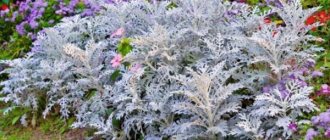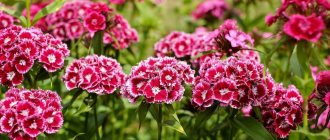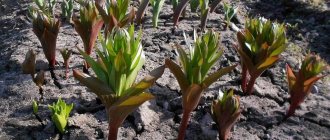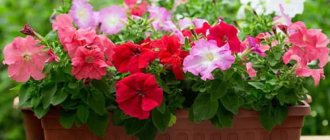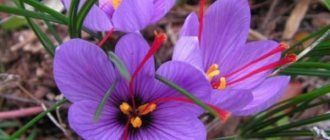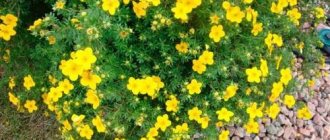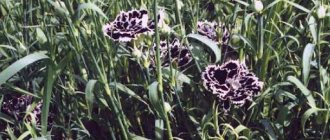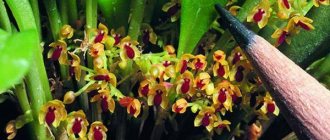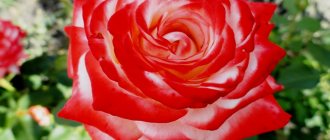Author: Tamara Altova. October 03, 2017
Category: Garden plants.
Fritillary flower (lat. Fritillaria) is a genus of herbaceous perennials of the Liliaceae family, which includes more than one hundred and seventy species that grow wild in the temperate climate of the Northern Hemisphere. Some species of hazel grouse are found in the forests of East Asia, but there are many more of them in the west of this part of the world. The scientific name of the genus comes from the Latin word meaning dice cup, which is roughly the shape of the fritillaria's rim. And the Russian name was given to the plant because of the variegated color of the most common species in Russia - the Russian hazel grouse, which resembles the feathers of a bird of the Grouse family. Today, fritillaries are the most popular bulbous flowers.
Features of cultivation
Before planting hazel grouse, it is worth understanding the peculiarities of its cultivation.
Here are some basic tips from experienced flower lovers:
- These flowers should not be planted in beds. This is due to the fact that they begin to bloom from late April to late May. After flowering, there will be an empty space in the garden bed. Therefore, when planting, they should be mixed with other plants.
- After the plant stem dries, you need to dig up the bulb and then plant it again at the end of August. Otherwise, the flower will stop blooming and may rot. The bulb does not need to be dug up for baleen species, Caucasian and Chinese varieties.
What does a hazel grouse look like?
- There are species that reproduce by bulbs, but most reproduce by seeds. It is better to propagate by seeds, as this produces plants that are most adapted to the conditions of the middle zone.
- All flower varieties require well-drained soil. Also, hazel grouse does not tolerate stagnant moisture. It is best to plant bulbs in containers. These can be plastic containers or cups. They require drainage holes to be drilled and dug into the ground.
- Only hazel grouse bulbs are available for sale, seeds are not sold.
The most famous varieties of hazel grouse: imperial, chess.
Important! When propagated by seed, the plant will begin to bloom only after 3-5 years.
Hazel grouse - the most spring flower
The name of this plant, indeed, comes from the name of the birds of the same name with the same variegated feathers as the petals of this spring flower. There are red, orange, burgundy-violet, bright yellow and a new selection - milky white varieties; there may be a mixture of these shades or a “checkerboard” color. But hazel grouse in blue or pink tones, as is sometimes suggested on the Internet, cannot be found in nature.
The disadvantage of the plant is the unpleasant smell - it comes from the flowers, bulbs and leaves
The unpleasant odor from the leaves and the musky trail from the flowers are perhaps the only drawbacks of this perennial. But the beauty of the flower incredibly smoothes out any shortcomings discovered during the cultivation of this crop.
The Latin name of the genus of hazel grouse is “Fritillaria”, which comes from fritillus - chessboard. This, of course, is due to the variegation of flower colors. The plants have a leafy stem of varying heights, from 10 cm to almost 1.5 m, at the top of which there are one or more bell-shaped flowers. The bulb is flattened, usually consists of 2 (sometimes more) fleshy storage scales. Hazel grouse (fritillaria) is a perennial herbaceous plant of the Liliaceae family, often found in the European part of Russia, Europe and Asia. There are about 150 species of hazel grouse; about 25–30 varieties are known for domestic cultivation. The most common species in Russia is the Russian hazel grouse.
Wikipedia
The Russian hazel grouse is the ancestor of most wild hazel grouse on Russian soil.
In the European part of Russia, rare species are found in the wild: Russian hazel grouse with medium-sized variegated purple buds, imperial hazel grouse - a tall variety with bright red flowers, eastern hazel grouse and chess grouse - similar to Russian hazel grouse, but with less pronounced variegation, Kamchatka hazel grouse - a rare species with dark purple petals.
Grouse are typical ephemeroids (with a short growing season), the growth of which begins in the season of positive temperatures and plenty of moisture in the soil, i.e. in spring. The plant forms a stem, leaves, flowers, forms a new bulb and dies until the next season. A dormant bulb can be dug up, replanted, stored, or shipped. Fritillaries begin their growing season very early, some of them are the first large plants to bloom in the spring garden.
Hazel grouse awakening from under the snow in spring
Just keep in mind that there are different types of grouse (or fritillaria). Most are short and nondescript (in my opinion). So tall, about 1 m, these are the imperial ones. There are yellow, red, orange. There is also the name “royal crown” - because of the panicle on top. So far it’s good when cut, I don’t know how long it will last. The imperial hazel grouse has a yellow-orange color scheme. With various variations - lighter/darker. Hazel grouse are not pure white, blue or pink.
Helga
https://www.forumhouse.ru/threads/15423/page-15
They say that hazel grouse appeared in Russian royal gardens back in the 16th century, but our ancestors could not achieve annual full flowering. Despite all the efforts, the culture did not take root well: hazel grouse love loose, fertile soil, plenty of sun and moderate watering. The perennial is well cultivated in a temperate continental climate - positive daytime temperatures in early spring, heavy rains, hot but not dry summers and winters with heavy rainfall are ideal for this plant.
Grouse are quite cold-resistant and are rarely damaged by return frosts.
Hazel grouse is used as an ornamental and medicinal plant. Some varieties of the plant are poisonous because they contain large quantities of alkaloids. Nevertheless, other varieties of hazel grouse are edible - the bulbs of the Kamchatka hazel grouse, common in Asia and along the entire Pacific coast, were eaten by the Indians of North America and the Kamchadals in the old days. Some types of hazel grouse are used in Tibetan medicine.
Fritillaria purdyi is a rare species of fritillary with whitish flowers having gray markings
They say that these bulbous plants are excellent at repelling mice - rodents are unlikely to be found within a radius of half a meter from them.
The hazel grouse emerges from under the snow early - in mid-March. The air temperature during the day may not exceed +8+10 °C, at night the thermometer can drop below 0. The hazel grouse reacts to the sun's rays - as soon as the sun warms up, there are already leaves and in a couple of weeks flower stalks. These plants easily die in the event of return frosts; the buds of hazel grouse also rarely suffer from this.
Video: meet the imperial hazel grouse - the most common species of hazel grouse
Hazel grouse in the garden: studying varieties
Among the many cultivated varieties, the most common in our country is the imperial hazel grouse and its varieties (for example, small-bulbed hazel grouse). Wild species of this flower are cultivated from the Black Earth Region to the Far East and Primorye, many of them are listed in the Red Book.
Table: varieties of hazel grouse flower
| Plant name | Features of the view |
| Aigul or moon flower | A tall plant (up to 1.5 m) with long narrow leaves located along the entire stem and large red-orange bells. Blooms in early spring in the steppes of Kyrgyzstan and Kazakhstan. The species is listed in the Red Book. |
| Fritillaria sewerzowii - Severtsov's hazel grouse | A medium-sized (up to 1 m) perennial with fleshy leaves, like a tulip, with narrow small bells, colored grayish-violet, lightened at the tips of the petals. The plant is widespread in the western Tien Shan, Central Asia and China. |
| F. ruthenica - Russian hazel grouse | It grows mainly in the European part of Russia, in Siberia and the Ciscaucasia. The perennial blooms in April - May, reaching a height of 50 cm. The buds of the Russian hazel grouse are bright purple with a fuzzy mesh structure and a “checkerboard” pattern. The population of the plant is declining; the Russian hazel grouse is listed in the Red Book. |
| Kamchatka hazel grouse | It is found in the Kuril Islands and Kamchatka, the Far East and North America. It grows on coastal cliffs, sea terraces, and in swamps in the tundra. The height of the plant is no more than 60 cm, the flowers are black and purple with a “checkerboard” pattern, and have an unpleasant odor. Blooms in June-July. |
| Eastern hazel grouse | The alpine meadows of Transcaucasia are the distribution area of the eastern hazel grouse. The height of the plant is about 40–50 cm, bright purple flowers are collected in clusters of 2–3 pieces. The eastern hazel grouse blooms in May - June. |
| Checkered hazel grouse | Distributed throughout forests and floodplains in central Russia. The plant is no higher than 35 cm, the flowers are medium-sized, purple, with a pronounced “checkerboard” color. |
Some species of wild hazel grouse are considered poisonous.
Photos of the hazel grouse varieties presented above
Tourists come to admire the absolute beauty of Aigul during the period of mass flowering.
In the old days, Kamchatka hazel grouse bulbs were eaten by local residents
The eastern hazel grouse is the most unpretentious of all the “savages”
The checkerboard hazel grouse has an amazing color, different from other forest and coastal flowers
Severtsov's hazel grouse differs most from other hazel grouse in its flowers, which are atypical for this flower culture.
The most powerful and bright flowering is that of the imperial hazel grouse with bright orange buds; the yellow one is more inconspicuous and blooms later. Regarding the smell: cut hazel grouse really smell disgusting, like rot and trash. But this smell does not spread from the buds - it comes from the plants when you break their leaves and stems.
Video: a wild relative of the hazel grouse - the Aigul flower
Bulb selection
When to plant phlox in open ground in spring
Before you decide when to plant hazel grouse, you should choose the right bulb. Grouse bulbs are somewhat different from other bulbous plants.
When purchasing them, you should pay attention to the following:
- Size. The hazel grouse bulbs are large. A good specimen weighs five hundred grams. In some species, the weight reaches one kilogram.
- Dense composition. A healthy onion is hard to the touch. There should be no soft spots, rot or other damage.
- The bulb has a through hole. The dried stem located in the central part of the bulb does not need to be removed.
- Sprouted roots are acceptable on the bulb.
Checkered hazel grouse
Gardeners recommend purchasing bulbs right before planned planting. If they are purchased in the spring, then they need to be stored properly.
After the plant has flowered, the tubers are dug up. If the bulbs are large, digging must be done annually. After removing them, you need to save them until the next planting.
Store the plant bulbs in a dark place where the temperature does not exceed twenty degrees. If the temperature is too high, the planting material dries out and loses moisture, and this cannot be allowed. The best storage option is in boxes filled with sand.
What does a hazel grouse bulb look like?
Fritillaria "Meleagris" and "Uva Vulpis"
Fritillaria "Uva Vulpis" belongs to the Assyrian species and is one of the most beautiful varieties. It blooms with large dark burgundy inflorescences, the inner part of the bud is olive in color.
The flower is of average height about 65 cm, with lush long foliage.
"Motley" and the variety "Meleagris" belong to the checkerboard species of fritillaria. They are distinguished by the bright, graphic and memorable color of the petals. The low-growing, sparsely leafy stem reaches a height of up to half a meter. “Meleagris”, despite its unusual color, does not require painstaking care, grows well in any garden, but without attention it quickly grows wild and becomes smaller.
Selecting and preparing a site for hazel grouse
When to replant primrose - in spring, summer or autumn
Before planting hazel grouse in the fall, you need to prepare the place. This is necessary for the flower to be healthy and develop properly.
The plants in question love a little shade, but they can also grow well in full sun. In this regard, a flowerbed can be chosen in an open area, especially since for the conditions of the middle zone such a place will be a priority. In the spring, the bulbs germinate faster and ripen by the winter. In southern areas, the bulb can be planted in partial shade.
The soil for hazel grouse should be loose and fertile. The plant bulb can be grown in the same place for more than five years.
How to prepare a place
The soil is prepared as follows:
- Sand is added to the soil, which will make it looser. For one sq. m. you need two buckets of sand.
- In addition, the soil is enriched with organic fertilizers. It is recommended to add humus, leaf soil, and compost.
If the bed is well prepared, then in the future you will not have to add additional organic or mineral fertilizer to the soil next to the plant.
Important! The most important thing is that in the place where the hazel grouse will grow, moisture and melt water should not stagnate.
Why does the hazel grouse not bloom? Why don't hazel grouse bloom? Errors in care
Why don't hazel grouse bloom? Errors in care due to which hazel grouse do not bloom. How to correct mistakes in care so that hazel grouse (fritillaria) bloom. What should be the planting depth for good flowering? Let's look
Hello, dear gardeners!
Today we will try to answer several questions regarding growing hazel grouse. For many gardeners, the imperial hazel grouse does not bloom, and we will try to suggest what the reasons may be for this.
It happens that they produce leaves, but there are no flowers on them year after year. Why does this happen and how to still achieve flowering?
I want to say that large-flowered (large) fritillaries have the peculiarity of blooming in adulthood, when the bulbs are of decent size. In an adult hazel grouse, the bulb reaches about 8 centimeters in diameter. If the onion is smaller, then most likely it simply has not matured yet before flowering; it simply needs to grow some more. This is the first point.
The second point: very often hazel grouse are planted incorrectly - just like tulip bulbs, many gardeners plant hazel grouse bulbs not deep enough, because of this they either get small flowers, or hazel grouse do not bloom at all. Those. They need conditions such that during wintering they are buried about 30 centimeters. Look, if the diameter of the bulb is 8 cm, then according to the rules for planting bulbous crops, we plant at three heights of this bulb. It turns out that we, at a minimum, must plant the hazel grouse bulb 25 cm deep, and in the literature they write that it is 35 cm. But I don’t plant that deep. I have 25 centimeters. My hazel grouse blooms like this and winters like this. I have red-orange fritillaries and they are blooming very well.
Another third reason why hazel grouse does not bloom is incorrect storage conditions in the summer. Those. All the bulbous crops that we grow (tulips, daffodils, hazel grouse, hyacinths), absolutely all of them require dry summer storage. Why? Yes, because in nature they grow in conditions when the summer is dry, very hot, there is no precipitation, the bulb ripens there, a flower bud is formed and then good flowering occurs. But in the middle zone, it naturally rains and is cool, and there are completely different conditions and a flower bud simply does not form unless you dig up your hazel grouse. Try digging them up, storing them at a temperature of 30 degrees somewhere, and then just at room temperature. I have them on the second floor of my garden house, where they are warm enough, it can even get hot. And in the fall, along with tulips, you plant them in some prepared bed.
So what about those hazel grouse that don’t bloom? A certain situation has occurred. When I was digging up my hazel grouse, I cut one onion with a shovel, and it so happened that I gave up on it, I think that everything died, literally fell apart into several parts. And the next time I began to plant another plant in this place, I discovered that a small healthy onion appeared from each of these sections. This is how small onions form on the scales of lilies, and how the hazel grouse also forms new onions on parts of a chopped onion. And these young ones are just growing up to their mature state, when they will already bloom. Here are three rules to follow to keep your wonderful imperial hazel grouse blooming:
- Deep landing
- Summer storage in dry and warm conditions
- The bulb must mature.
If you choose a bulb in a store or market, then if you want something cheaper, then take a small one, and if you want to get flowering right away, take the largest one, 8 centimeters in diameter. Then you will have such wonderful yellow bells on May 1st.
Landing dates
When to replant peonies in spring, summer and autumn
For beginning gardeners and gardeners, a problem arises when to plant hazel grouse, because the flowers begin to bloom in the spring. The answer to this question is that the bulbs need to be planted in early autumn.
When to land
The timing will vary for different areas, as the landing depends on the weather. The best option is early September, a month before the first frost occurs.
It takes three to four weeks for the onion to take root. If you delay planting a flower, it will not be able to adapt and will die in the winter.
For reference! There are late-flowering varieties that can be planted in the spring. But novice gardeners are better off choosing traditional varieties.
Appearance
Fritillaria, popularly known as hazel grouse, blooms among forest edges and in gardeners' flower beds in the spring. Its bell-shaped flowers stand out sharply against the background of partially melted snow and the first bright green blades of grass.
One variety of this plant is especially noticeable among the awakening nature - Russian hazel grouse. Its flowers are painted in dark shades, but despite this, they are colorful among the spring meadows.
A variety of fritillaria
Direct landing
Planting of this plant for some species can be done in the spring, and for others in the autumn. Autumn planting is considered standard.
Planting hazel grouse in autumn: when and how to plant
The landing process looks like this step by step:
- Bulbs should be planted to a depth equal to three times their height. The largest bulbs are deepened to a distance of up to 20 cm, and small children - up to 10 cm.
- Sand drainage must be placed at the very bottom of the hole. Its layer must be at least 15 cm.
- The bulbs are planted directly. You can't lay it down at an angle. If there are roots, they need to be straightened.
- A distance of 25-30 cm must be maintained between the bulbs. This is due to the fact that hazel grouse are large plants and require more space for their development.
Before planting, you should ensure that moisture does not accumulate in the bed. If the occurrence of groundwater is too close, then the flowerbed is made high.
Spring planting
In spring, only those species that bloom late are planted. The landing process occurs in the following order:
- Preparing a hole for a flower. There should be no moisture in it. Sand can be used as drainage.
- The bulbs must be well dried.
- Very carefully place the bulbs in the hole sideways.
- Next they are sprinkled with sand.
For reference! It is worth undertaking spring planting only in cases where it is known for sure that the variety is late flowering.
Methods of breeding hazel grouse
Russian hazel grouse: what the flower looks like
Fritillary flowers are mainly propagated by dividing the bulbs, since with the seed method the first flowering occurs after 6-7 years. The seeds are collected after the capsule has completely dried and immediately sown in the prepared soil. The distance between the seeds is at least 10 cm. As for dividing the onion, it is cut into 2 parts. The halves are dipped in a disinfectant solution and then dried. The bulbs must be sprinkled with ash. With such propagation, the first flowering will occur the next year.
Important! An adult bulb can form a baby. A larger bulb is selected and a scraping is made with a sterilized instrument, with a diameter of no more than 20 mm.
The wound should dry thoroughly. Then the bulb is buried in dry and clean sand. The box with sand is placed in a dry place. Roots appear only towards the end of August. They are treated with a fungicide. You need to remove the bulb carefully, otherwise you can damage the small children.
Grouse - care after planting
The bulbs of this plant tolerate winter well. They are classified as frost-resistant. However, children and small onions require shelter. It must be carried out according to all the rules, especially if a winter with little snow is forecast.
The material used is spruce branches or straw. Do not use peat or humus. The mulch layer should be no less than 25 cm.
Covering the flower bed with plantings is done after the weather has settled and the temperature drops below 5 degrees. This will help prevent rodents from entering, as they love to make holes in the mulch layer.
How to care
When spring comes, the mulch is removed and the place where the bulbs were planted is cleared. This will allow the soil to warm up faster and the bulbs to begin to grow.
No special care is required for hazel grouse. It is important to follow the basic rules for all plants:
- The bulbs are moistened at least twice a month. Dry soil will be detrimental to hazel grouse;
- after the flower stops blooming (July), it is necessary to completely cut off the upper part of the plant;
- Fertilizers must be applied twice a season. Fertilizing is carried out during the flowering period. To do this, it is necessary to use complex fertilizer along with humus. The resulting composition is spread around the perimeter of the flowerbed and then watered with water.
Important! In cold weather, minerals (potassium, superphosphate) are added to fertilizers.
Secrets of lush flowering of fritillaria
After winter sleep and the soil warming up to +12, fritillaria awakens and appears on the surface by the end of April. Loosen the soil around the flower, remove weeds, and apply phosphorus-potassium fertilizers.
During the period of active growth, the hazel grouse will reach half a meter in a couple of weeks; during this period, fertilizing in the form of compost should be applied. And when the plant produces its first flower stalk, apply root fertilizer in the form of ABA (all-purpose) granules for garden flowers.
During flowering, keep your fritillaria plantings moist and loosen the soil in a timely manner; this will saturate the plant with oxygen. Removing the seed box will increase the flowering period to 5 days. If you follow all the above measures, fritillaria will delight you not only with lush and large flowering, but also with unusually bright colors of flowers.
Transplanting hazel grouse: when is the best time to do it?
Gardeners often wonder when to replant hazel grouse after flowering. It is possible to replant the plant only in one case, when the bulb is ready for it. Preparedness can be determined by the yellowing of the foliage, provided that the plant is healthy. Small bulbs need to be planted quickly because they can lose a lot of moisture.
You should not replant hazel grouse when the soil is too wet. This can lead to rotting of the root system.
How to replant
When replanting, you need to be very careful with the roots of the plant, as they are very easy to damage.
The hazel grouse is a unique plant: it is not only very beautiful, but also useful. The flower is able to repel insects and rodents. Growing it and caring for it will not be difficult. The main thing is to follow the basic rules of planting and care: planting dates, storage of planting material, soil preparation and fertilizing, correct arrangement of tubers, preparatory procedures for winter. By following these rules, you can grow flowers that will delight you with their appearance.
The legend of the hazel grouse
The last of the names is associated with an amazing legend about the betrayal of Jesus Christ.
It seems that previously hazel grouse flowers only bloomed with white corollas looking into the sky.
When they led past the captive Christ, he looked at the flowers with such sadness that they immediately blushed with shame and lowered their imperial crowns.
His mother Maria, having learned that her son had been handed over to crucifixion, wept inconsolably and bitterly. And the flower cried with her, which is why drops of nectar are still dripping so abundantly down to the ground.
Diseases and pests
With the right planting conditions and timely application of fertilizers, diseases and pests can be avoided. But sometimes hazel grouse can be affected:
- A fungus that spreads on the bulbs. The disease can be avoided only by going through all the planting material and separating infected from healthy ones. For prevention purposes, such plants are planted separately from the rest.
- Lily beetles and rattle bugs. They are destroyed by insecticides. But most often there are few beetles on flowers, so they can be collected by hand and then destroyed.
During agricultural activities, it is important to inspect each flower for the presence of certain pests. Lesions may not appear immediately; the signal will be a change in color of the buds or leaves.
Method of planting in containers (baskets)
Although the bulbs have a pungent odor, in any case you cannot be 100% sure that moles and rodents will not touch them. Therefore, it is recommended to plant them in special baskets for bulbous plants. In addition, they simplify the digging process.
The landing pattern will be standard. Only the bulbs are placed directly in the baskets.
